Rock climbing is a challenging and rewarding sport that can be enjoyed by people of all ages.
But before you can start scaling those rocks, you need to know how to use the right climbing holds.
There are many different holds out there, each with its own unique set of challenges.
Some holds may appear to be obvious, while others may not. Knowing how to tackle each one helps you anticipate what the route setters had in mind for a specific issue, making it easier to address.
While learning some of these holds may take time, it is helpful to know that you're correctly approaching them.
Plus, it'll give you the confidence to keep pushing yourself until you've reached the top!
How Should You Handle Climbing Holds?
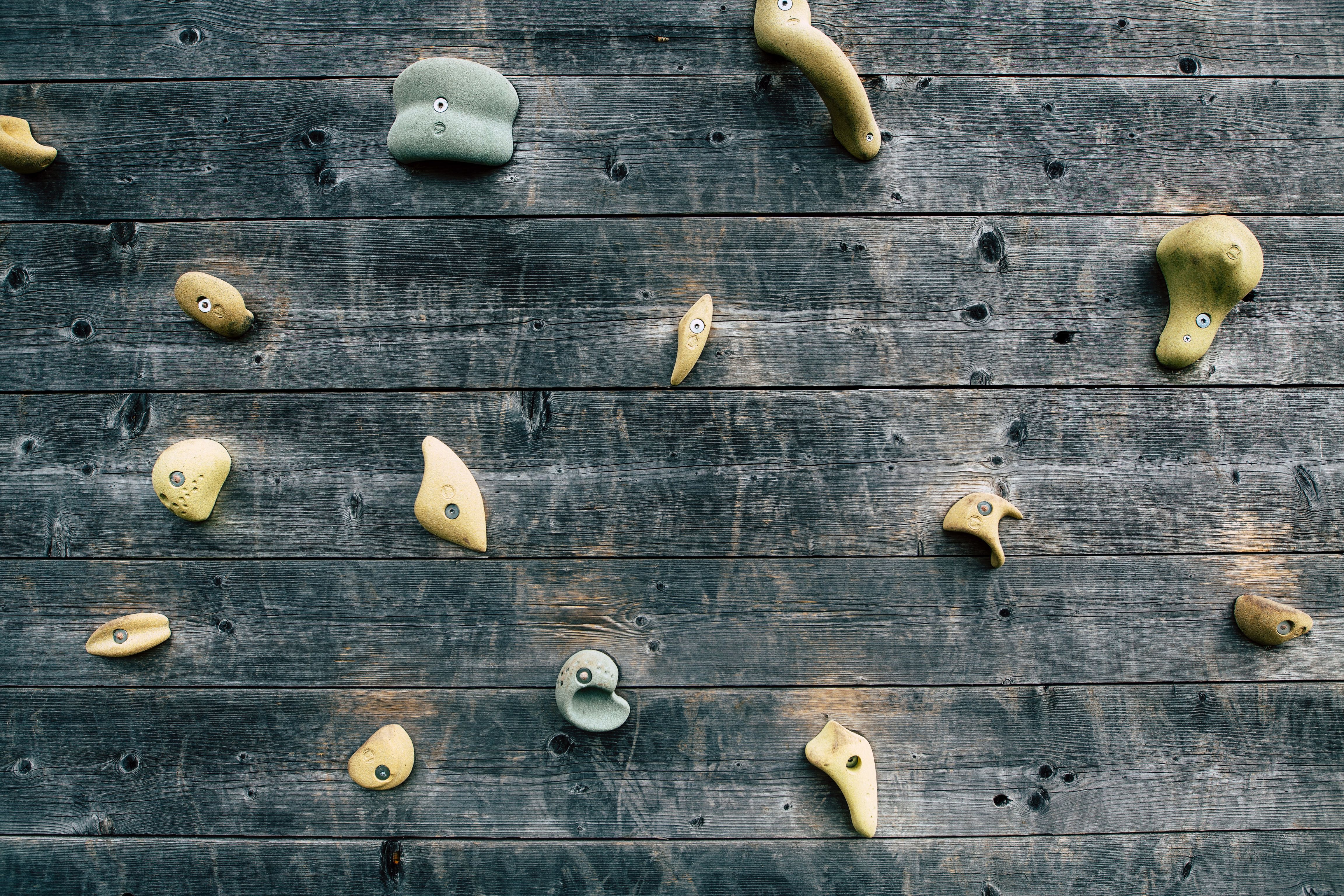
One of the most important things to keep in mind when it comes to rock climbing holds is that they come in all shapes and sizes.
This means that you'll need to learn how to adjust your grip depending on the hold's shape.
For example, a small hold will require you to use your fingers more, while a large hold will require you to use your entire hand.
You'll also need to keep an eye out for any textured areas on the hold. This can help you get a better grip and avoid slipping.
Meanwhile, texture is critical when it comes to rock climbing holds.
The best way to tackle a hold with texture is to use the friction of your skin against the surface.
This means that you'll need to keep your hands and feet well-hydrated, especially during hot weather climbs.
Otherwise, you may find yourself slipping off more often than you'd like!
What Are The Different Types of Climbing Holds?
In addition to knowing how to handle them, it's also essential to be familiar with the different types of climbing holds.
To get you up to speed, here's a quick overview of their most common types:
1. Crimps
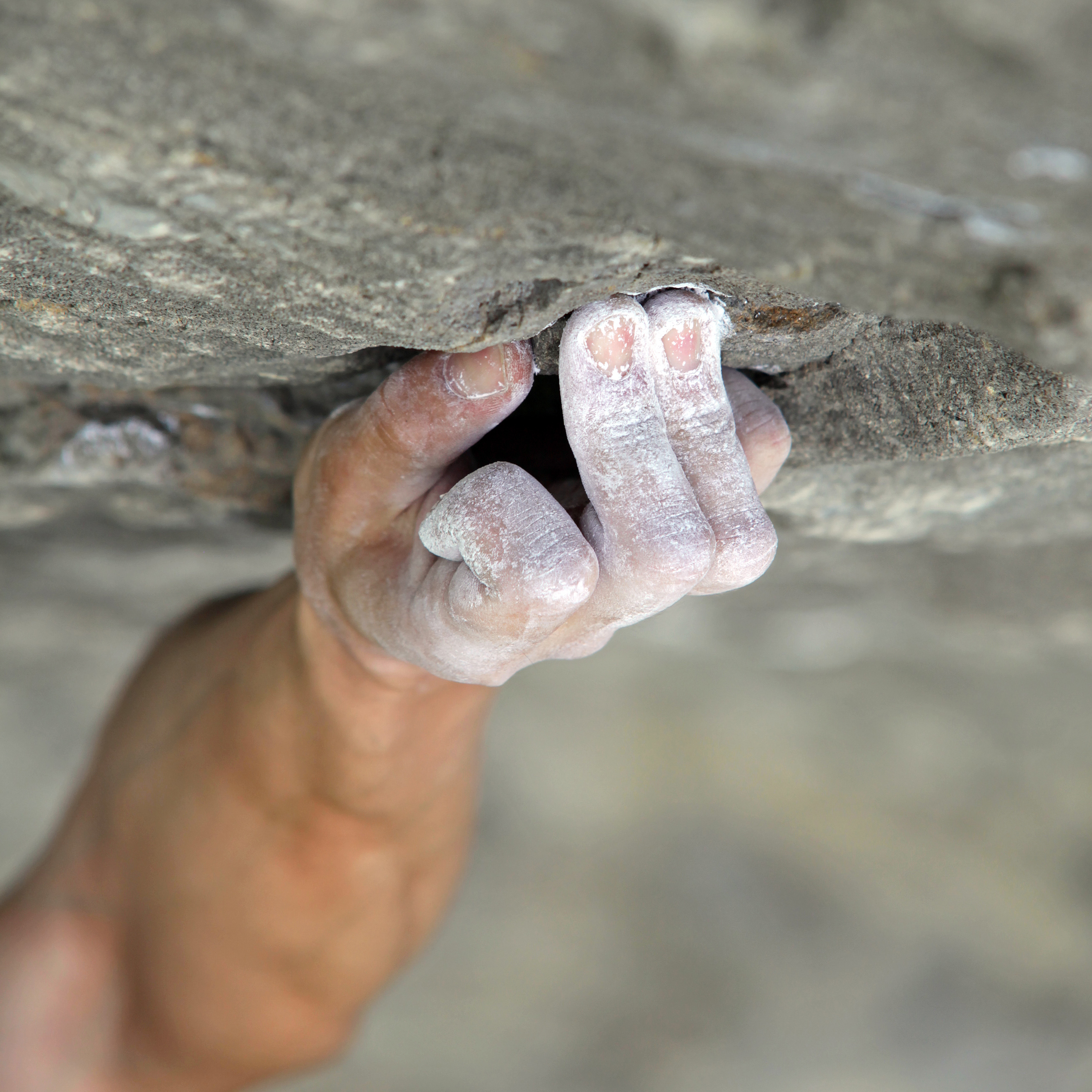
These are the smallest type of hold and are require you to use the tips of your fingers. Crimps require a lot of precision and strength.
Depending on the complexity of the climb and how large your fingers are, you may be able to fit one or two fingers onto this hold.
For a more in-depth description, check out our article covering half crimp vs. full crimps.
How to climb them: The best way to approach crimps is to use the power in your fingers and focus on maintaining a tight grip.
To get a better angle, press your fingertips into the hold and stay as close to the wall as possible.
You may keep the grip "open" by leaving your thumb aside or "closed" by bringing your thumb over the top of your fingertips for added force.
It's important to be extra cautious when you're just starting out since it would be your fingertips that would feel that sort of pressure.
These grips will also work your shoulders and arms and build a lot of lactic acid in your forearms.
Extra tip: Crimps require a lot of precision and strength, so make sure to do some finger strength training and exercises before attempting them.
You could also try a hangboard if you want to specifically train for crimps.
2. Pockets
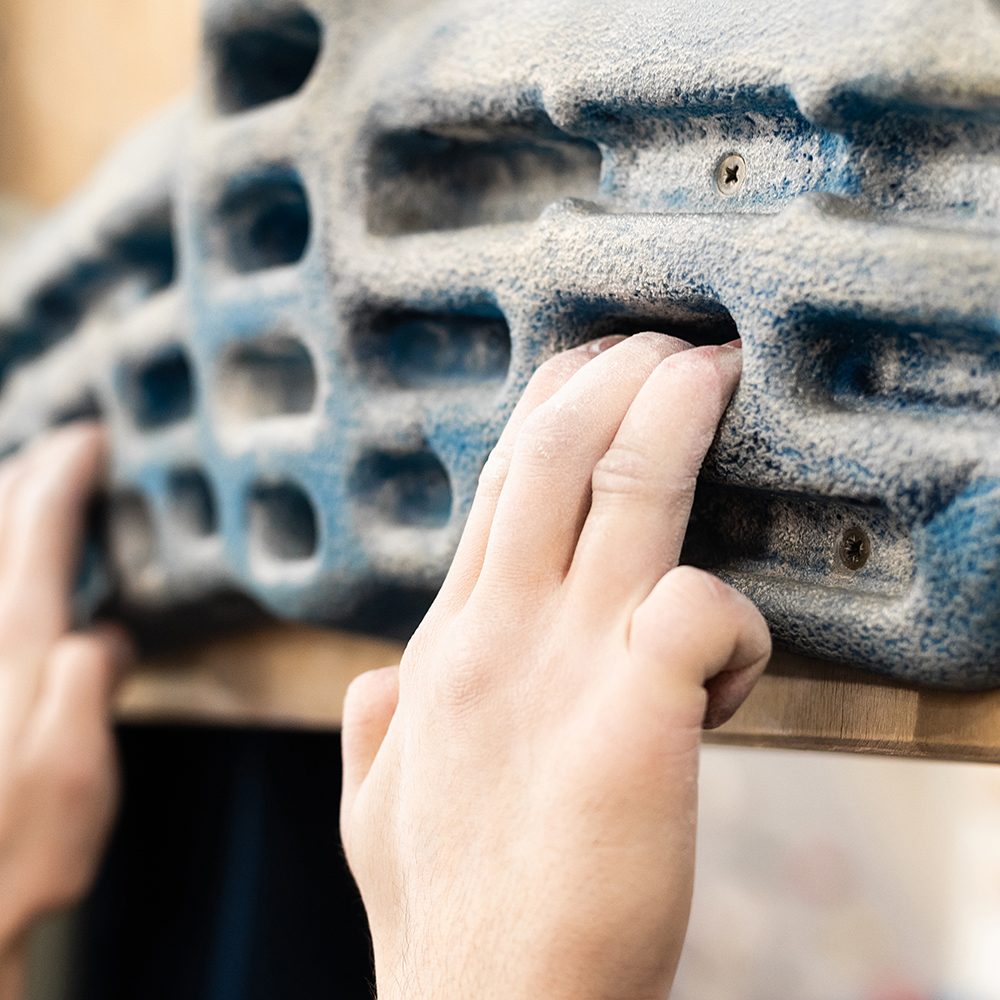
Pockets are small, recessed holds that can be found in various shapes and sizes. They're usually big enough to fit one or two fingers into, but some may require your full hand.
On more advanced climbs, you may even come across double pockets (two adjacent pockets that can be climbed together) or shallow pockets (a pocket that's only a few millimeters deep).
How to climb them: You want your strongest fingers to grip the inside of the hold, depending on how big or small the pocket is.
Some people feel most at ease with their first and middle fingers, while others prefer their middle and ring fingers.
The index finger is also used for a three-finger pocket. Your thumb does not go into the pocket, but it does pinch the hold's edge for more grip.
Extra tip: If you want to master this kind of hold, take time to strengthen your fingers by doing finger exercises at home.
This will help you develop the muscles and dexterity needed to grip small holds.
Fingerboards are an excellent tool for this, but make sure that you don't overdo it and injure yourself in the process!
3. Pinches
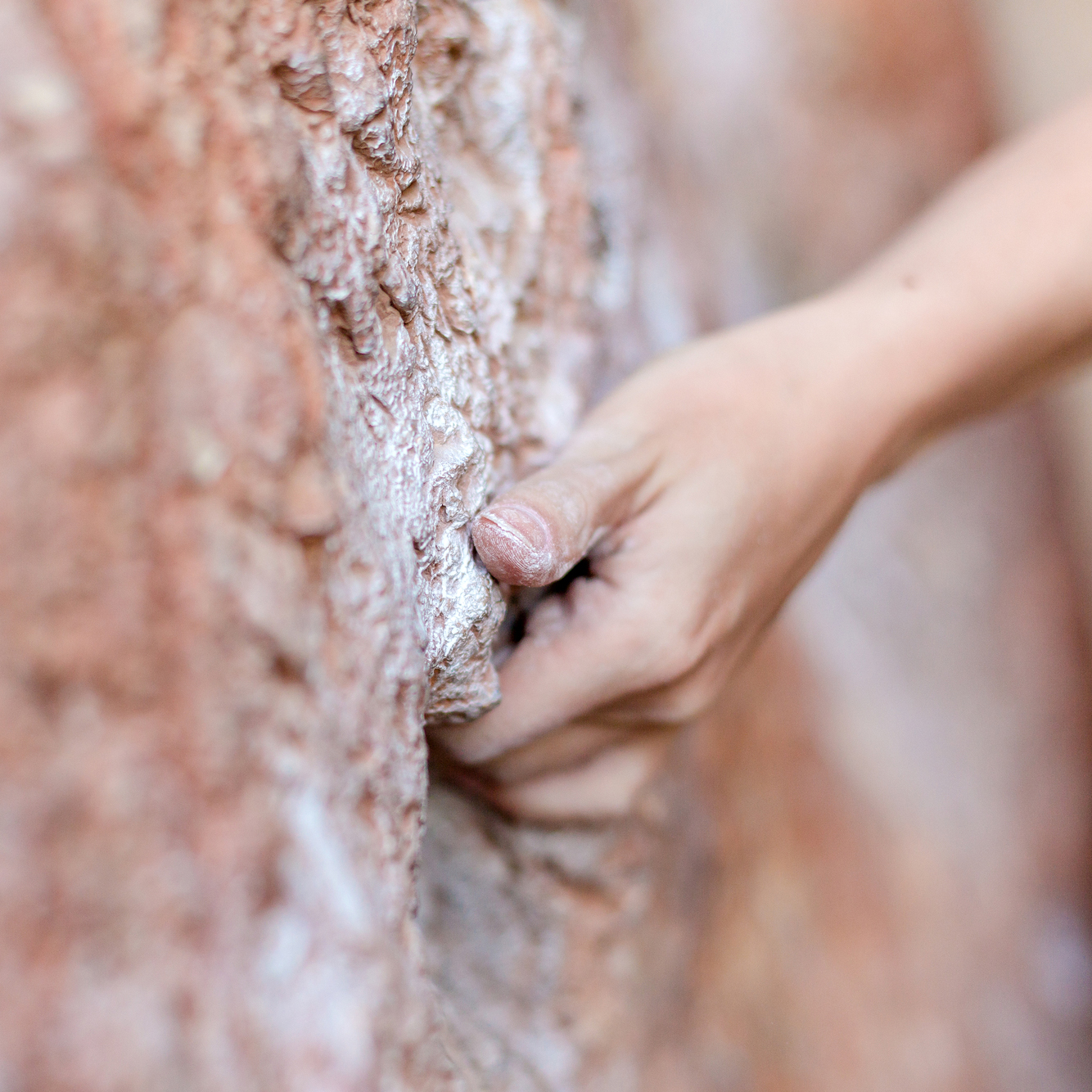
Pinches are typically vertical holds. They have characteristics comparable to slopers and other grips, but they are narrow enough to accommodate the whole hand.
Pinches are usually slightly more positive, allowing you to press your thumb against one side and the rest of your fingers against the other.
How to climb them: Pinches require you to use the entire hand, so it's essential to focus on maintaining a tight grip.
Squeeze your hand into a lobster claw shape. The key is to keep all your fingers tight on the hold.
Some people find it helpful to use chalk on their hands to get a better grip. You can also try different hand positions until you find one that feels comfortable.
Extra tip: Keep in mind that pinches can be quite tiring, so make sure to take breaks when you need them!
The key to improving at these holds is to build muscle in your forearms. Wrist curls, reverse wrist curls, and farmer's walks are all great exercises to help with this.
4. Slopers
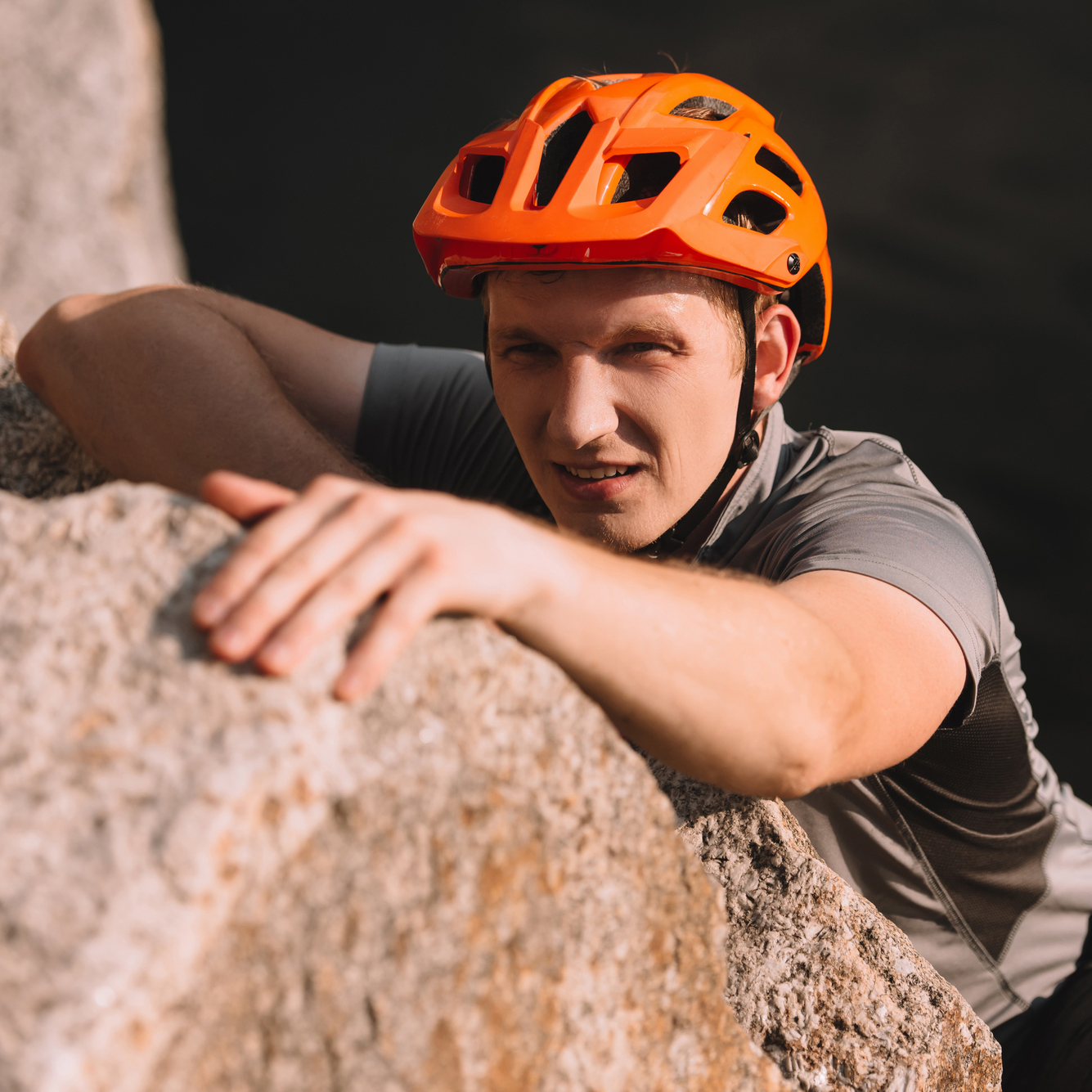
Slopers are unique in that they have a rounded form with no clear positive edge, unlike most other climbing holds.
Slopers have a highly abrasive surface that provides your hands with more traction to compensate for the lack of gripping.
Slopers are typically larger than other holds, and they're frequently utilized in more advanced climbing routes.
You may even discover entire climbs that were created entirely of slopers!
How to climb them: The best way to climb slopers is to use your entire hand and apply pressure with all of your fingers.
Think about pushing down into the hold as if you're trying to crush it between your hands.
This will help increase friction and give you a better grip. Like pinches, slopers can be quite tiring, so make sure to take breaks when you need them.
Extra tip: Chalk can be really helpful for slopers, so don't forget to use it!
You can also try different hand positions until you find one that feels most comfortable and provides the best grip.
Try strengthening your arms and shoulders with exercises like pull-ups, chin-ups, and dips.
5. Jugs
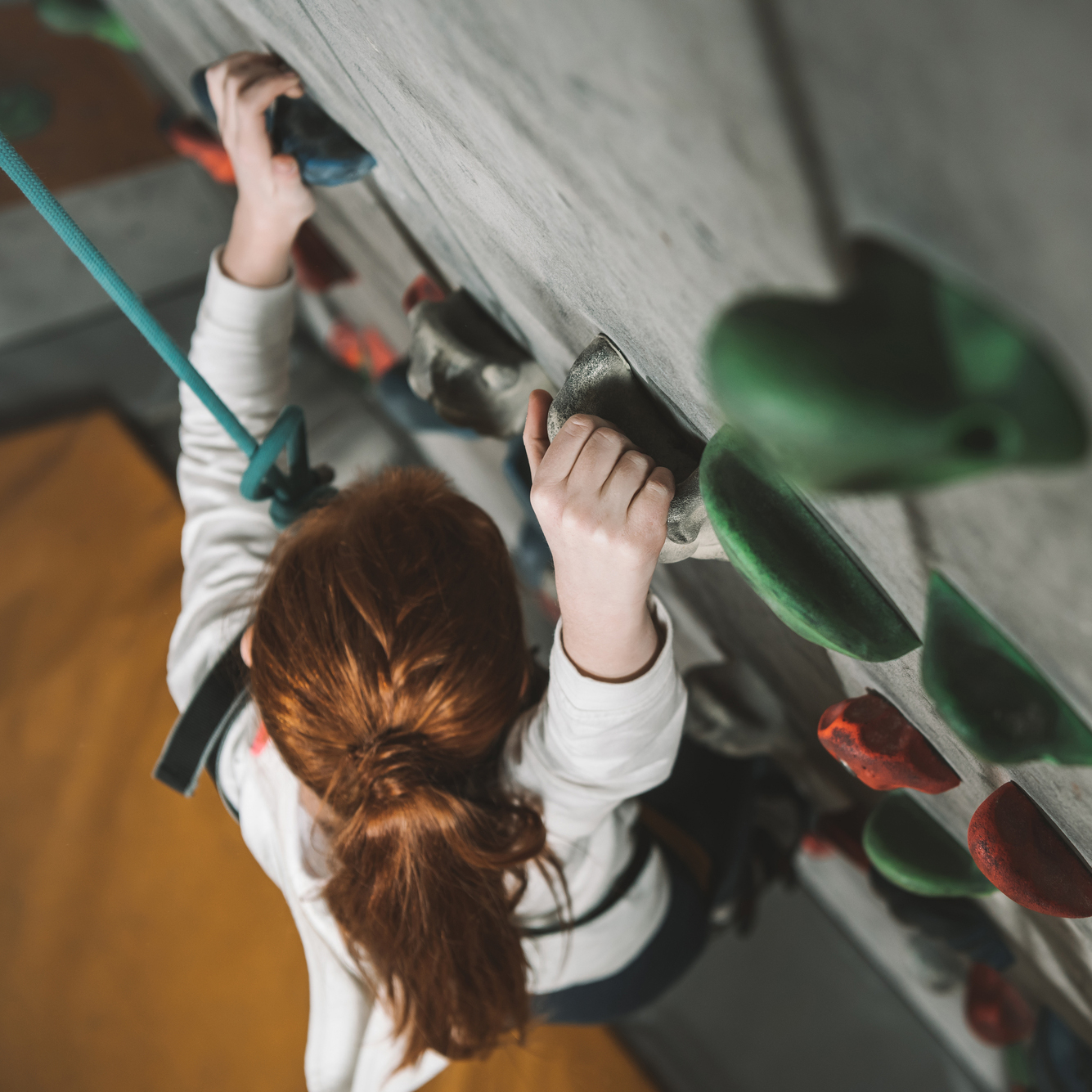
Most jugs have a big hollow region at the top of the hold, which you can slide one or more hands into with ease.
Jugs have also been given the name because of their simplicity. This means they are easy to use on a rock face.
Any good or simple hold on a rock face is called a jug.
How to climb them: Simply curl your fingers over the edge of the hollow area and pull.
Jugs are pretty simple to climb and are frequently used as a resting spot on challenging climbs, giving you breathing room to plan your next move.
Extra tip: Jugs are a great way to rest, so make sure to take advantage of them when you need them!
If you're looking to improve your climbing, make sure to focus on strengthening your forearms and shoulders. These muscles will help you grip the jugs more effectively.
6. Edges

Edges are one of the most prevalent holds, and they can be found in almost all types of rock.
They vary in size but are typically small and sharp. Edges can be positive or negative, depending on the angle at which you're gripping the hold.
How to climb them: They may be pulled in any direction, so thinking about how you'll tug on them and from what direction is crucial.
Many climbers find it helpful to use the edges of their shoes on small edges for better traction.
Extra tip: Start by finding a comfortable position with your feet and then move up the wall, using smaller and smaller holds.
This will help you become more comfortable with different types of edges and improve your grip strength.
When it comes to edges, practice makes perfect! The more you climb, the better you'll become at using them.
7. Sidepulls
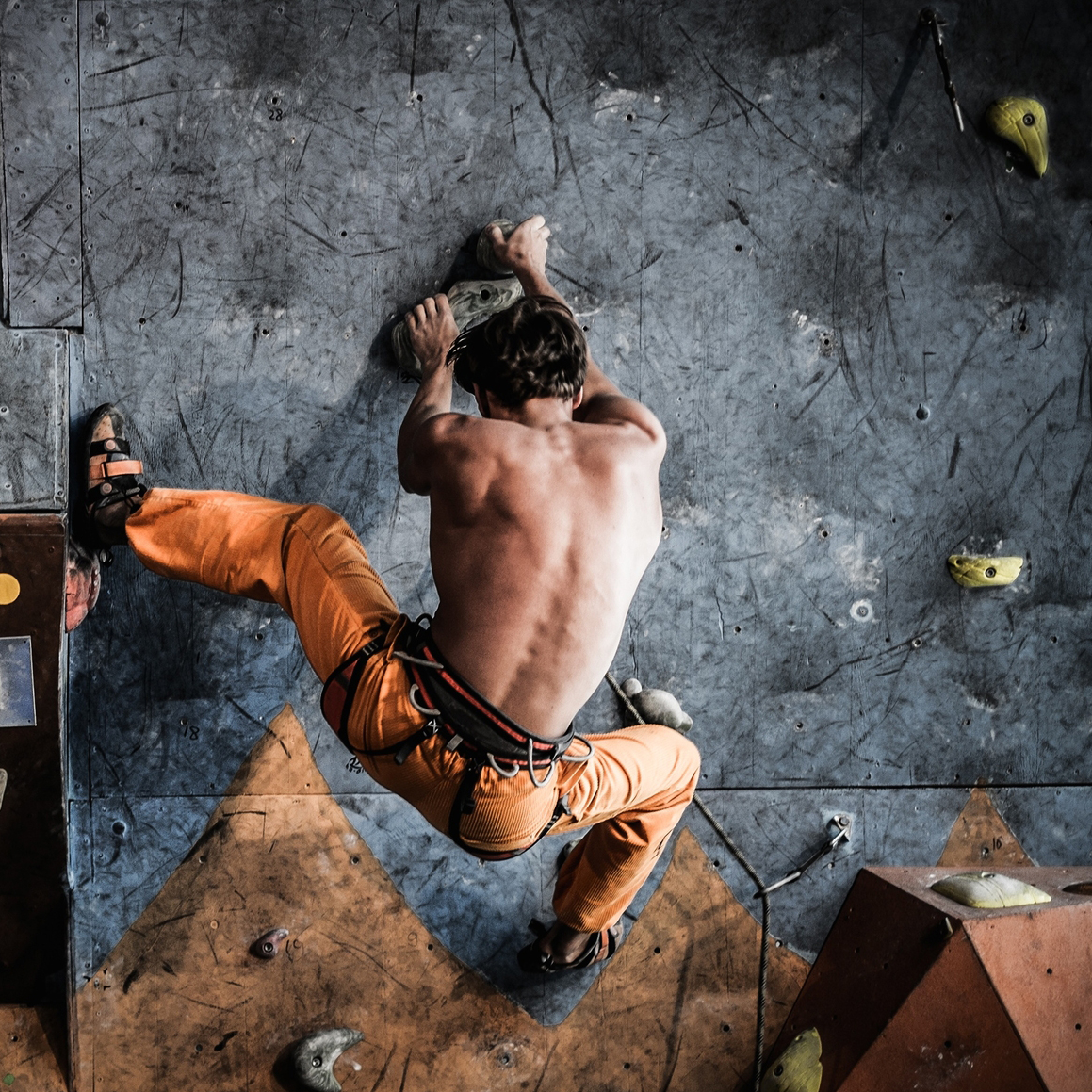
Pinch pulls are vertical climbing holds best suited for a crimp-like grip.
Sidepulls are one of your best friends when it comes to pulling. Rather than bringing your body up, sidepulls assist you in moving sideways to extend yourself and gain access to different foot and handholds.
This is a good grip for getting to hard-to-reach handholds or around obstacles in rock climbing.
How to climb them: When using a sidepull, make sure to keep your arm close to your body. This will help you maintain control and stability.
Use the muscles in your back and biceps to pull yourself up and around the hold. Use your legs to push off the wall and help you move around the hold.
This will take some of the pressure off your arms and help you maintain your grip.
Extra tip: Sidepulls are a great way to get up and over obstacles in your climb.
If you find yourself struggling with a certain section, try using sidepulls to help you navigate your way through it.
When it comes to climbing, practice makes perfect! The more you climb, the better you'll become at using sidepulls.
8. Undercling
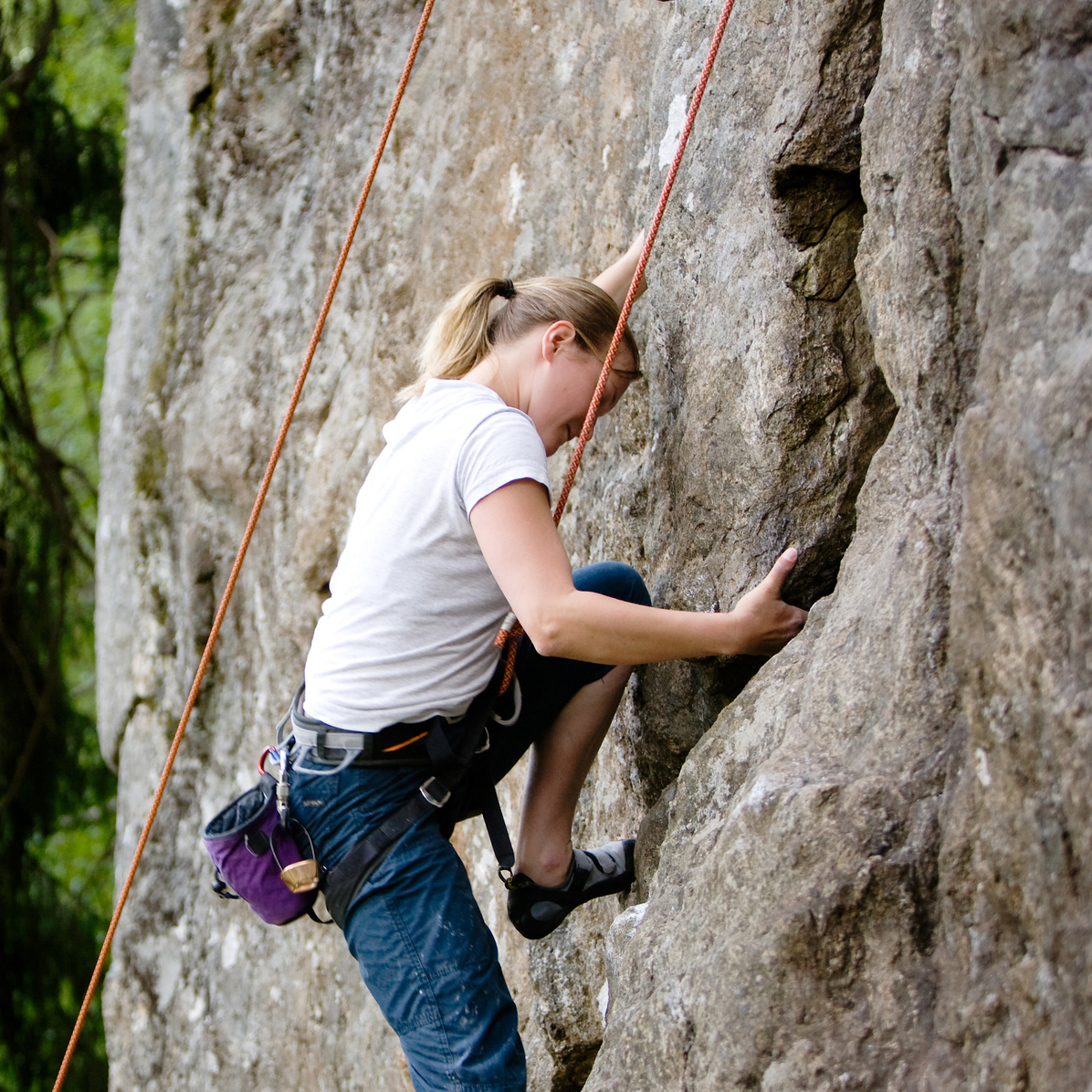
Underclings are holds that you grab from beneath, with your fingers on the bottom and thumb on top (like a pinch).
In the midway position, you're in a hanging-style lockdown. This lock is usually around mid-torso and might be tough to master since it requires considerable muscle strength to climb out of this position.
How to climb them: You'll be holding your hands with your palms and fingers facing up. Your biceps will be straining as a result of this posture.
You can reach up high to your next hold and move off of it after getting a solid grip on an undercling.
Extra tip: Underclings are one of the few holds that don't need to be reached above your head.
You need to strengthen your muscles first before you can start using this hold. Try doing some pull-ups and chin-ups to build up your strength.
How Often Should You Train Your Grip Strength?
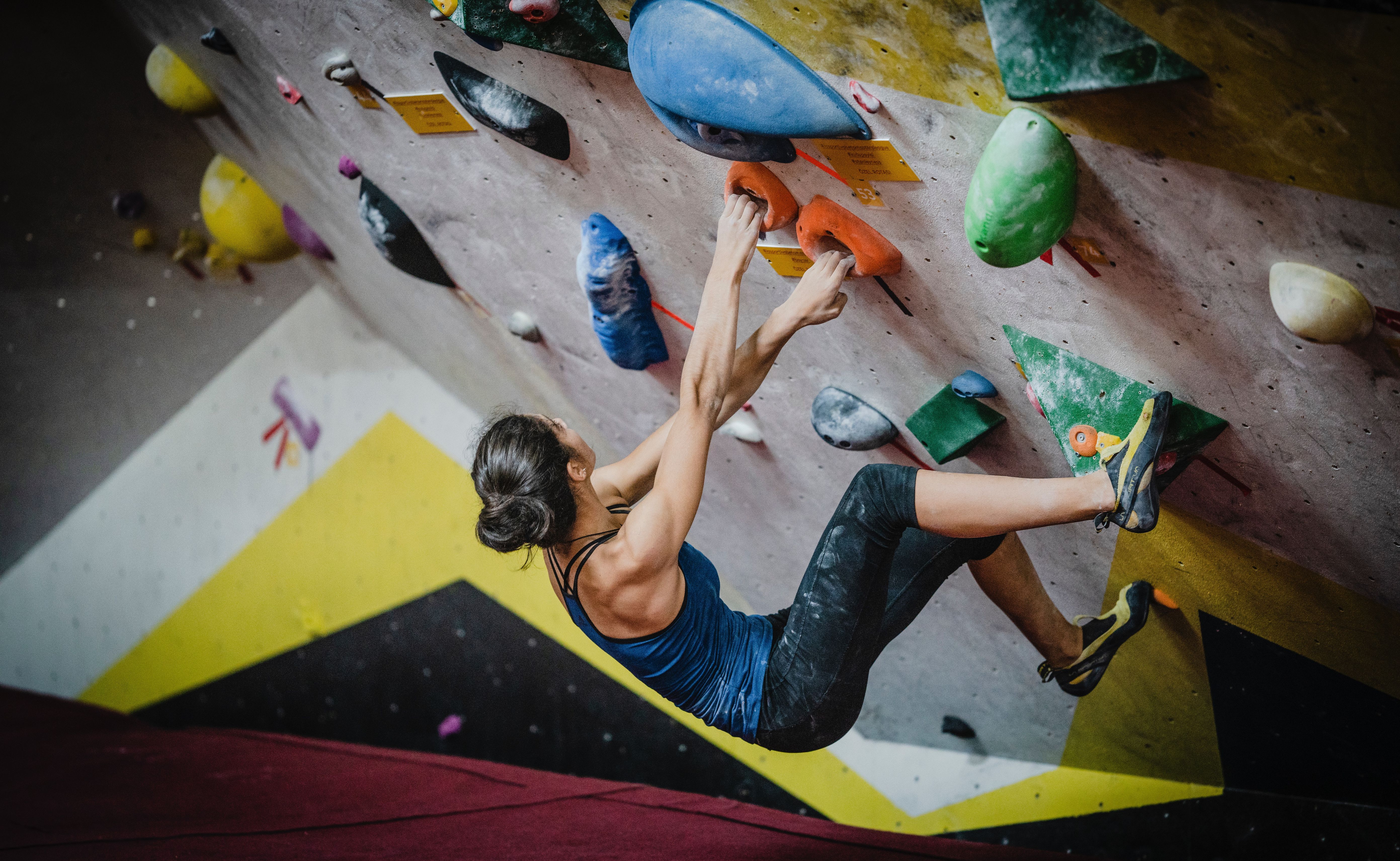
It is recommended that you train your grip strength at least two to three times a week. You can do this by incorporating exercises such as pull-ups, chin-ups, and farmer's walks into your workout routine.
A finger resistance band or a grip strengthener can be an excellent minimalist way to build grip and crimp power. They may be used every day.
However, advanced hangboard and progression board training is usually done twice a week.
In general, it is best to keep grip training sessions short and sweet. This is because grip strength exercises can be very taxing on the body and can lead to injury if done excessively.
Start by doing two or three sets of five to ten repetitions of each exercise.
As you get stronger, you can increase the number of sets and reps you do.
When it comes to rock climbing, having a solid grip is essential. This is why it's important to train your grip strength regularly.
Conclusion
There are many different types of climbing holds that you can use to help you get to the top.
Learning the proper techniques for using each hold will help you climb more efficiently and effectively.
The best way to improve your skills is to practice regularly. The more you climb, the better you'll become at using all types of climbing holds.
Remember to always use caution when climbing and be aware of your surroundings.
Climbing can be a dangerous sport, so always take the necessary precautions to stay safe.
And lastly, have fun!



